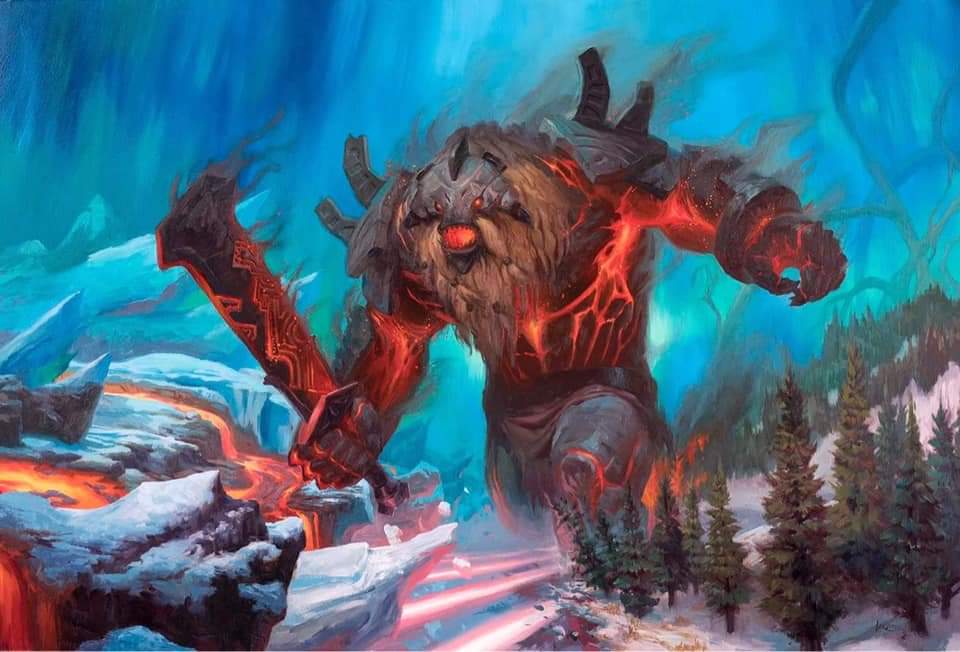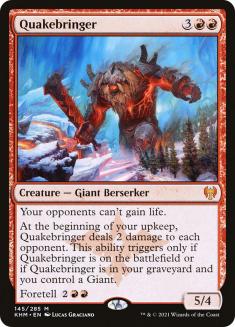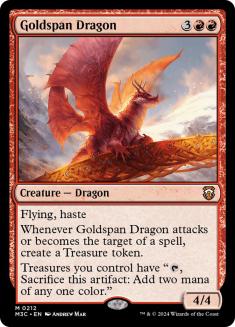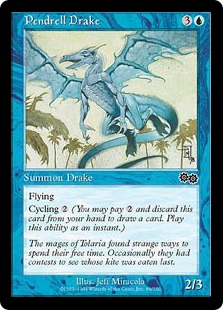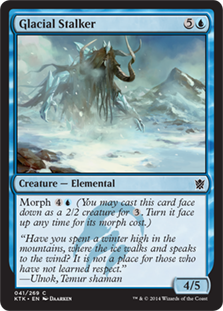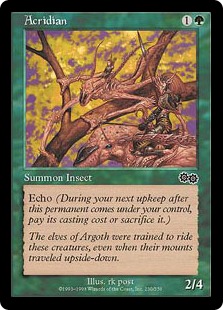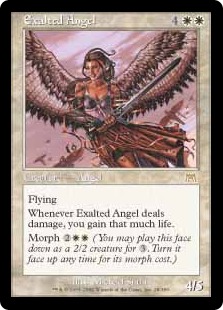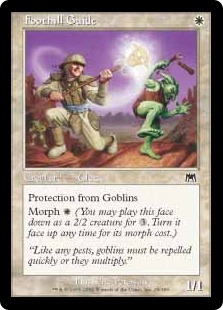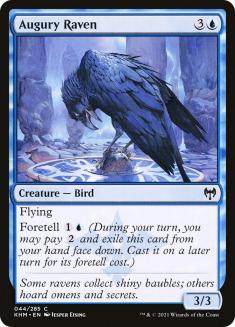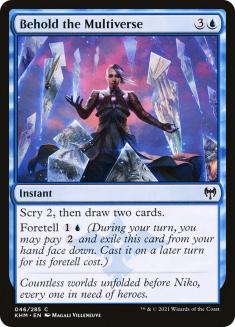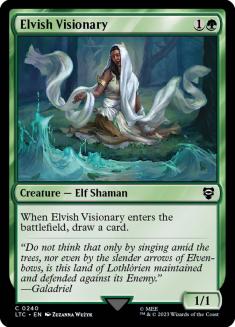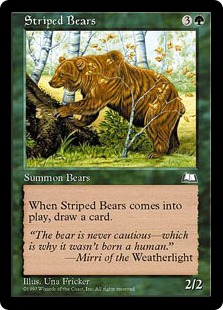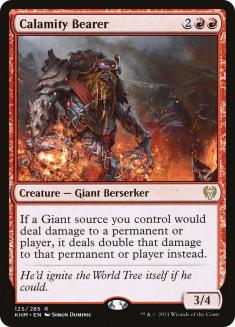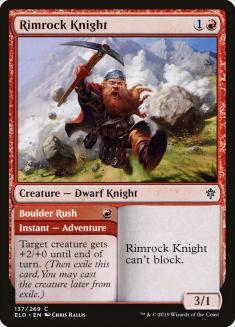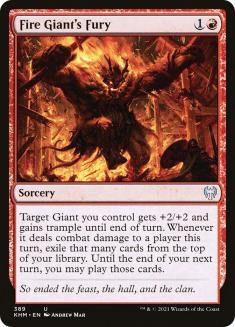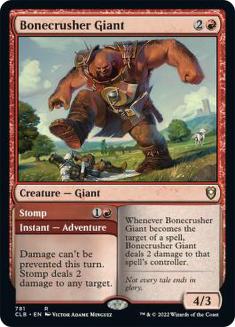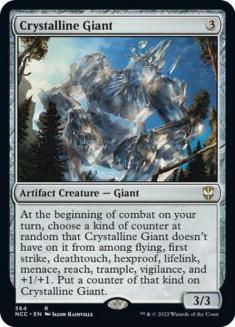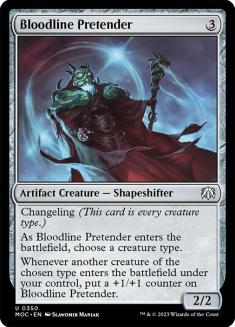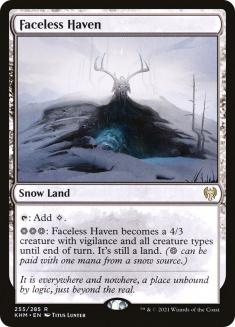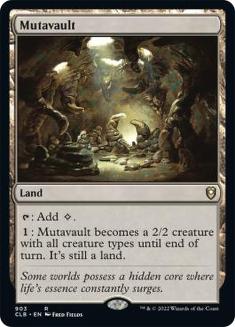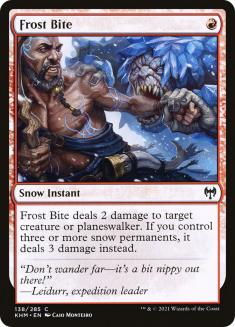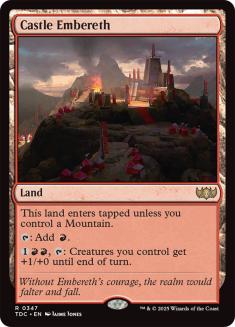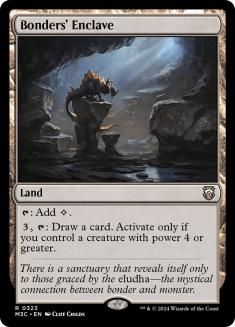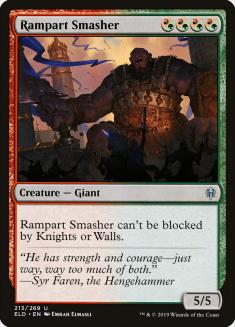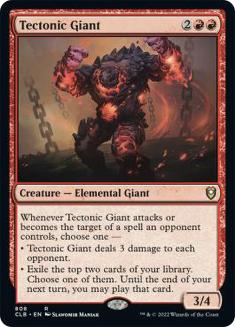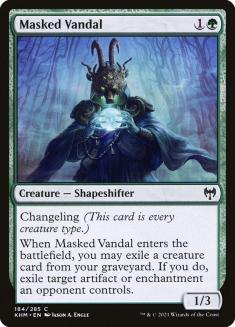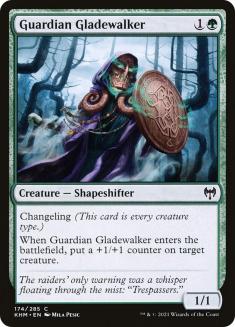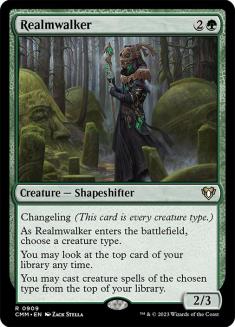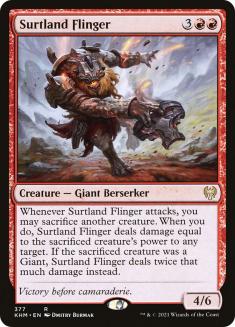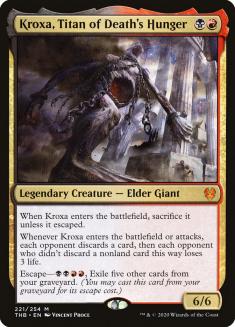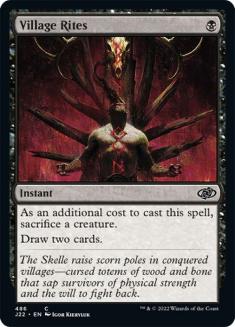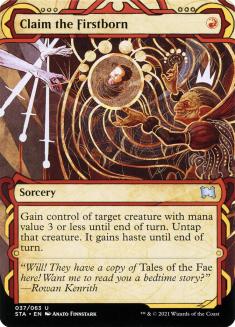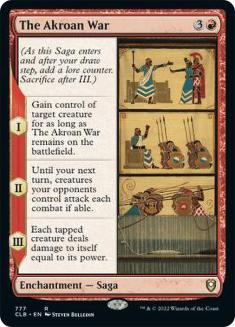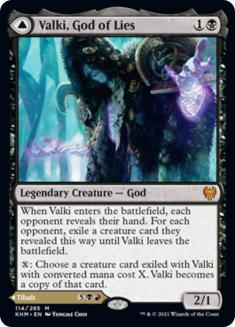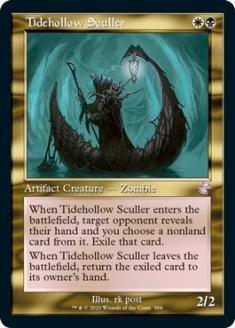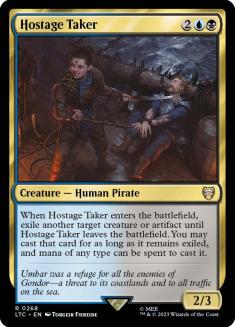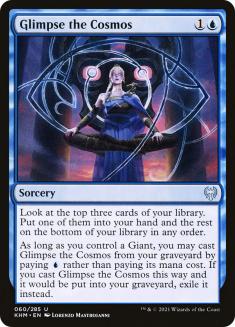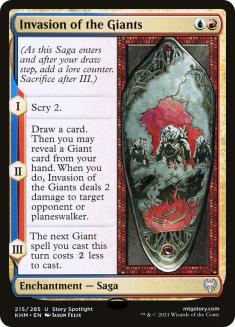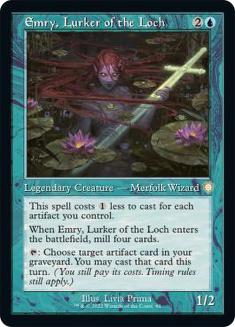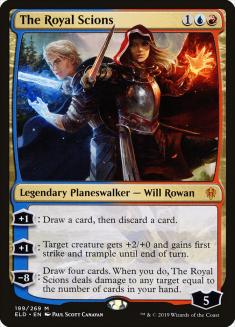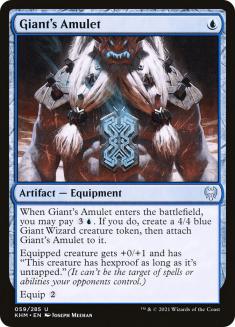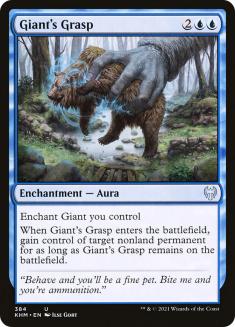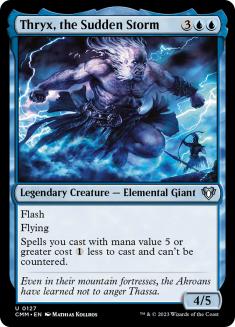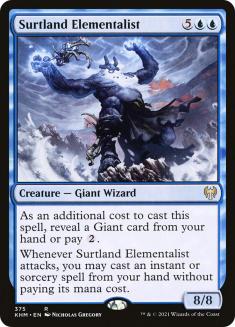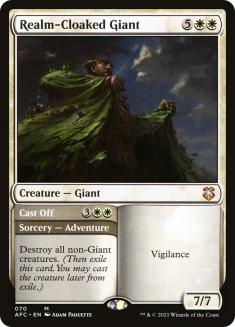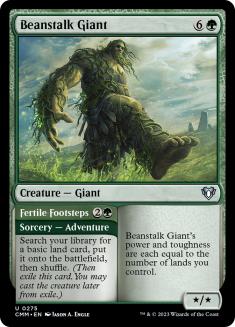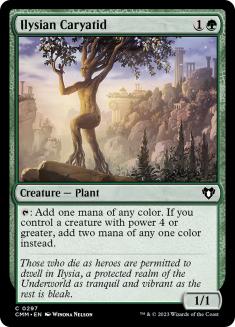The upcoming Magic: The Gathering set, Kaldheim, features more relevant creature types than we’ve ever seen in one set, including the return of Giants, a tribe that was never really fully explored as much as it could have been back in Lorwyn.
Quakebringer is a really interesting new kind of tribal reward. When it’s on the battlefield, the damage ability is pretty straightforward. At the start of your turn, Quakebringer deals two damage to each opponent (on top of that “opponents can’t gain health” ability). In some ways, this is like being a 7/4, but it’s a little better than +2/+0, since Quakebringer dealing two damage in some kind of a battlefield stall or when it’s locked down by some other permanent or killed during the attack is generally a fair bit more relevant than the possibility of fighting 6/6s or 7/7s in combat.
Even if it’s a little better than a 7/4 along with the anti-lifegain text, we’re still going to need more out of the other abilities.
The bar for five-drops is pretty high at the moment and Quakebringer is no exception. The tribal reward Quakebringer brings to the table is the ability persisting even while Quakebringer is in your graveyard. All you need is a Giant and it’s game on.
Through one lens, Quakebringer draws you a card when it goes to your graveyard (from anywhere), and that card is a zero-cost, difficult-to-remove permanent source of two damage per turn whenever you have a Giant. Obviously, how strong such a card would be depends on the other Giants in the format, but it’s not hard to imagine it being worth at least as much as a card.
If Quakebringer was just a 7/4 that shut off lifegain and drew a card when it died, it might still be a little short, just given how great of options there are. However, the ability to get that extra card for free by any means of putting Quakebringer into your graveyard makes the card especially enticing to try to self-mill or loot away. Once we start getting into the space of having powerful zero-cost cantrips from discard or milling cards, we’re starting to get into the space where the value can be so great, it doesn’t even matter all that much what the cost and stats are.
As an added bonus, Quakebringer has foretell, since, you know, the prophecy (and seismograph) spoke of the Earthquake to come…
Foretell is kind of a hybrid of cycling, morph, and echo.
Like cycling, it can give you a way to improve your options when you’ve got nothing better to do with the two mana. Like echo, it lets you pay for the card in installments. Like morph, it gives you a way to make a down payment on something without your opponent knowing what it’s going to be. It is a mana cheaper than morph but you don’t get to use it as a 2/2 in the meantime. Of course this does mean it can’t be killed by a Shock before you get a chance to finish paying for it. On balance, it also doesn’t get to attack immediately when you do make that second payment.
As the relative value of foretell does go up, the more different foretell cards you play, since your opponent will have less information telegraphed to them ahead of time. This advantage shouldn’t be overvalued, however. Morph cards had more value the more diverse of options they could be, but this advantage rarely made a big enough difference to get us playing cards we wouldn’t otherwise, at least in Constructed.
The relative diversity of options for foretell are even less substantial of advantages, since it’s not like our opponents have the decision of whether to Shock our Morph or not, a decision that is much easier when you know 100% of your opponent’s Morphs are Exalted Angels.
Some foretell cards give you full credit for the down payment:
Why is this not strictly better than just casting it outright? Simple. Foretell lets you make the rest of the payment on a future turn, so if you foretell the card this turn, you can’t just cast it “foretold” until a future turn.
That Quakebringer is only giving us a one-mana discount despite foretelling for two doesn’t mean it’s a bad deal. It’s just a different type of option. Part of what makes foretell interesting is the difference in what it means:
- When you’re saving one mana versus two mana
- When it’s on an instant-speed versus sorcery-speed card
- When the cost to cast from foretell is more than, less than, or equal to the two you paid for exiling it in the first place
A card like Behold the Multiverse is fine to imagine as a two-mana play, since foretelling it is actually slightly more mana-efficient. Yeah, it’s four mana either way; however, the relative value of mana scales non-linearly. Since spending mana on the early turns is more impactful, the bar is generally lower for what you need to get out of two-mana plays compared to four-mana plays.
Both of these cards cost a card and give you a card, making them card economy-neutral. Elvish Visionary buys you a 1/1 for two, while Striped Bears buys you a 2/2 for four (which is kind of just letting you buy a +1/+1 instead of a second 1/1). Even if it bought two 1/1s, however, it’d still be much weaker than Elvish Visionary, since the relative value of mana scales.
Quakebringer costing one less if you foretold it first isn’t the most mana-efficient way to cast the card, but rather an option for when we’re already being mana-inefficient anyway. As such, it’s important to consider it as a five-drop on your curve, and not be lured into the seductive trap of imagining it to be a four-drop.
Still, it’s nice to have an extra option and its existence reduces the pressure on us to fill out our deck with enough proactive two-mana plays to ensure we’re not wasting mana in the early turns. Even if Quakebringer is just getting countered or killed or whatever, every turn it came down earlier might yield two extra damage, and if we actually get to connect with it a turn early, that’s a boatload of extra damage.
One natural pairing to consider is the use of Quakebringer alongside Calamity Bearer. Calamity Bearer is a lot less “fancy,” but seems higher-impact to me. On its own, it’s already a 6/4 (or really a 3/4 that deals double damage, which is even better, since it doubles the impact of pump spells).
Rimrock Knight is a decent card to begin with, but with Calamity Bearer, we now get +4/+0 for one mana (plus we still get the 3/1 afterwards). Along these same lines, Fire Giant’s Fury is pretty incredible with Calamity Bearer in the mix.
Fire Giant’s Fury is a slow-speed +2/+2 and trample temporary pump with a heavy targeting restriction. That’s would not exactly be a very attractive offer for two mana; however, it also makes the Giant into an enormous source of card advantage if it connects. One good hit with Bonecrusher Giant and we’ve got six extra cards to work with between this turn and next. Yeah, we’re probably not going to be able to cast them all, but that’s a ton of options, and even if we end up playing just two spells and a land each turn, that’s an incredible surge of power from a two-mana spell.
Even if they try to throw stuff in front of the Giant, we’re still likely to get access to at least a few cards.
Calamity Bearer stacks pretty wildly with Fire Giant’s Fury. It doesn’t actually make the attack any less risky or anything (since a removal spell at instant-speed still blows you out); however, you get double the stats from the Fury and get access to double the cards. Casting a Calamity Bearer and then casting a Fire Giant’s Fury on it next turn is potentially ten extra cards to choose from for trying to finish off someone who just lost half their life.
Creatures (25)
- 4 Bonecrusher Giant
- 4 Rimrock Knight
- 4 Careless Celebrant
- 4 Crystalline Giant
- 1 Surtland Flinger
- 4 Calamity Bearer
- 4 Quakebringer
Lands (22)
Spells (13)

The make-up of Giant decks could look very different depending on how many inexpensive Giants and/or changelings end up appearing in Kaldheim. This first list is not very enticing to me, even if some of the synergies do big things. Just playing removal and fatties isn’t exactly a very 2021 strategy, and it’s not like we’re just crushing it on raw card quality.
Crystalline Giant does get a lot better when we’re playing Quakebringer, Calamity Bearer, and Fire Giant’s Fury, but it still does nothing to alleviate weaknesses to removal or falling behind in the first couple of turns.
Bloodline Pretender, for instance, looks like it could be the kind of card we want. It’s an inexpensive changeling and rewards us for playing one tribe. However, the rate is just too bad and it’s not like three is even earlier on the curve than we already get. Even if our deck is all Giants, we need to play two more Giants before the Pretender is even up to a passable rate (and that still hasn’t made up for the turns it spent small, having less impact on the battlefield).
Faceless Haven is the new Mutavault, and while it’s more restrictive in who can use it, it looks quite strong for one-color decks that can just play all snow basics without issue.
Faceless Haven is a strong enough new pivotal card for the format, it might ensure that snow-covered basics are likely to just be better than regular (assuming they don’t print anything that explicitly punishes snow lands). They could be a liability if stolen, and maybe that’s enough, but we’ll have to see if basic Mountain has a place in this world.
Frost Bite isn’t going to revolutionize Standard or anything, but it is a quality option for decks that can afford to play enough snow permanents, especially Snow-Covered Mountains. Decks using as many expensive cards as Giant decks might be in the market for a little extra mana efficiency out of one- and two-mana plays.
The increase in value of Snow-Covered Mountain does have interesting implications to the value of cards like Castle Embereth and Bonders’ Enclave. They are certainly not ruled out; however, the opportunity cost is higher than it was before. Still, given their synergy with the creature package, I’d definitely be interested in starting with them if playing anything like the above.
Part of the opportunity cost of Faceless Haven is the loss of options like Rampart Smasher. How much do we even care about another four-drop? Unclear. It’s not like there aren’t other plausible options, such as Tectonic Giant.
Maybe the green actually matters, since it does mean Rampart Smasher would power up Yorvo, Lord of Garenbrig, who is a Giant. I kind of doubt there will be enough incentive to go this direction, however, both with how hard the mana would be and with how unlikely it is that the Giant support lines up this way, given the Giants seeming to be an Izzet tribe in Kaldheim.
One advantage green might offer is its abundant supply of inexpensive changelings. If you just want playable two-cost Giants, Masked Vandal and Guardian Gladewalker could fill the role, and Realmwalker is an excellent three-drop if most of your creatures are Giants.
I included one copy of Surtland Flinger above to try out, but it just looks like completely the wrong kind of card for Standard these days. You need your five-drop to live and attack while you have another creature to sacrifice, and even if it’s a Giant, you’re just doing damage. It’s not even damage that counts for Fire Giant’s Fury!
If you were going to Fling anything, I suppose Kroxa, Titan of Death’s Hunger is one you might want to Fling. However, building with Kroxa makes the idea of playing five five-drops pretty unappealing, and Quakebringer seems better (and it’s not even clear we’d end up playing the maximum there either).
Creatures (23)
- 4 Bonecrusher Giant
- 4 Mire Triton
- 4 Kroxa, Titan of Death's Hunger
- 3 Valki, God of Lies
- 4 Calamity Bearer
- 4 Quakebringer
Lands (21)
Spells (16)

Kroxa, Titan of Death’s Hunger and Quakebringer really start to add up to a strong incentive to stock your graveyard. In addition to whatever graveyard shenanigans we put together, we might also look to incorporate elements of the Rakdos Sacrifice decks we’ve been seeing for the past couple of years.
Village Rites might be especially interesting with Valki, God of Lies, a powerful new card in its own right.
Valki, God of Lies is basically a split card that has a front side that’s kind of a combination Tidehollow Sculler and Hostage Taker.
The back side is a potent seven-cost planeswalker that deserves an entire article itself (which Michael Majors took care of for us). For now, suffice to say the card is sure to be a tournament player, and its combination with Village Rites is at least interesting, since you can sacrifice Valki to Village Rites with his trigger on the stack, ensuring the card is exiled for good.
Even if we weren’t going down the path of self-mill and graveyard antics, Glimpse the Cosmos would be an extraordinary incentive to play Giants. Even a deck with four copies of two Giants might really be interested in this card. You get 75% of the dig of Shimmer of Possibility, but then the ability to flash it back for only a single mana. That’s so incredible a rate, I think this card singlehandedly ensures that Giants will be a relevant enough creature type to have a meaningful impact on deckbuilding, at least until rotation.
Creatures (20)
Planeswalkers (2)
Lands (23)
Spells (15)

While this list needs some serious tuning, I think we’re finally starting to get somewhere. The advantage we can gain from Glimpse, Quakebringer, and Kroxa isn’t trivial, and we have a lot of enablers here.
Invasion of the Giants isn’t at its absolute best here on account of the lack of awesome stuff to ramp into. However, as long as you’re pretty consistently able to reveal a Giant, it’s a lot of smoothing and value for two mana.
One blue option I considered for such a graveyard-heavy deck is Emry, Lurker of the Loch. After all, Crystalline Giant and Bloodline Pretender are both artifact creatures. Still, it didn’t seem there was enough incentive to go that way compared to just playing more enablers that don’t ask you to play such weak support cards, like The Royal Scions.
Cutting black, we might consider something a little more controlling, though how much of a control shell you can play with a bunch of fatties is always an interesting question.
Creatures (18)
Planeswalkers (1)
Lands (20)
Spells (21)

While Glimpse and Invasion are both excellent enablers, we’re still waiting on appealing blue Giants from Kaldheim.
Giant’s Amulet isn’t actually a very efficient distribution of stats and abilities for what Giants are trying to do right now. Besides, it doesn’t even work with Invasion of the Giants anyway, which is one of the primary reasons to care about Giants in the first place.
There could be a world where Giant’s Grasp is a maindeckable card, but the only hexproof “Giant” being Giant’s Amulet doesn’t really make it seem like that’s where we’re at yet. Still, Giant’s Grasp could be an excellent sideboard card and isn’t a zero for maindeck play if the right kind of Giants show up.
Thryx, the Sudden Storm is at least an interesting blue Giant, but we haven’t really seen enough reason to value it compared to anything else we might be doing for that kind of mana.
There’s just no way this is what’s happening. It’s just too ambitious, too slow, too high on the curve.
Maybe Thryx could be a role-player in Jeskai?
Creatures (17)
- 4 Bonecrusher Giant
- 4 Realm-Cloaked Giant
- 1 Thryx, the Sudden Storm
- 2 Crystalline Giant
- 4 Calamity Bearer
- 2 Quakebringer
Lands (24)
Spells (19)

Realm-Cloaked Giant is certainly an exciting Giant tribal reward, and it does give us something to ramp into.
If we wanted to take it even further, we could just rip the Band-Aid off and embrace Beanstalk Giant. It is an excellent Giant to reveal to Invasion of the Giants, and getting more Giants out of ramp slots in our deck is pretty efficient.
While I’m guessing the list below has too much of the previous ramp deck’s DNA in it, I actually think some version of Four-Color or Five-Color Giants is going to end up being a real deck in Standard.
Creatures (30)
- 4 Lotus Cobra
- 4 Gilded Goose
- 4 Beanstalk Giant
- 4 Bonecrusher Giant
- 4 Realm-Cloaked Giant
- 2 Thryx, the Sudden Storm
- 4 Tangled Florahedron
- 4 Quakebringer
Lands (20)
Spells (10)

While I stuck with Tangled Florahedron for more consistency, Ilysian Caryatid might not be out of the equation with both the five-color fixing being valuable and the double ramping for having a big creature (especially if we end up with black for Kroxa or whatever).
It’s kind of a bummer that so much of the ramp here dies to Realm-Cloaked Giant, so maybe the real answer is to move more towards stuff like Cultivate.
Can you imagine if Uro, Titan of Nature’s Wrath was legal?
That said, it is legal in Pioneer…

